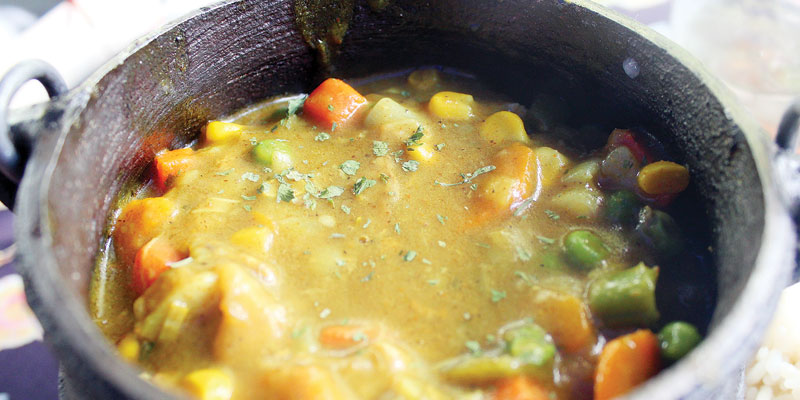
EATING crocodile meat in Zimbabwe used to be widely despised for various reasons including the fact that the reptiles are carnivorous and sometimes have human flesh for dinner.
Victoria Mtomba
Most people in the country would confess to not having ever eaten crocodile meat.

But times are changing, the tables have turned. In recent years crocodile meat is now found in a number of retail outlets and restaurants where it has become a delicacy for the more culinary adventurous families.
Statistics from the Crocodile Farmers’ Association of Zimbabwe (CFAZ) show that the annual production of crocodiles in this country is 80 000 reptiles and the sector employs an average of 1 100 people.
Thousands more have benefited through downstream employment.
Workers in the crocodile production industry are engaged in different tasks such as breeding, feeding and culling the marine beasts.
CFAZ chairman Jimmyson Kazangarare said the bulk of the businesses are in hot regions such as Kariba, Binga, Victoria Falls and the Lowveld, with smaller concerns also scattered in Deka (Hwange), Mhangura and Chinhoyi.
- Chamisa under fire over US$120K donation
- Mavhunga puts DeMbare into Chibuku quarterfinals
- Pension funds bet on Cabora Bassa oilfields
- Councils defy govt fire tender directive
Keep Reading
Recent reports indicated that crocodiles in Lake Kariba were being fed a vegetarian diet to enhance the quality of their skin.
“Most of the skins produced are destined for export as the local uptake of quality skins is very low. Local tanneries are unable to process skins to the standard required by the international buyers,” Kazangarare said.
Feeding them with protein concentrates, minerals, vitamins, maize meal and water is said to enhance the quality of crocodile skin, which is an important raw material in the manufacture of luxury goods and apparel such as handbags, belts and jackets. Crocodile blood is used as a food supplement to promote health due to its haemoglobin levels while crocodile oil is used as a cure for skin problems and other ailments.
Crocodile breeding expensive, sensitive
Padenga Holdings Limited administrative executive James Watson said for a farmer to produce quality skins, there was need for a good infrastructural system, correct feed quality and quantity and strict attention to animal health precautionary measures, correct pen side management and a motivated staff.

Padenga is one of the top companies engaged in crocodile farming in the country.
“Quality is determined by the prevalence of imperfections on any given skin. These are predominantly related to old and new scars on the skins. These include cuts that result from the production process, imperfections as a result of disease, and skin abnormalities related to poor feed quality or quantity,” Watson said.
He added that the quality is assessed at several stages during the production cycle to ensure high quality skins.
Kazangarare said the companies face many challenges including inconsistent supplies of high quality feed, increasing power costs, increasing costs of levies and increasing labour costs making it a huge task to do crocodile farming.
He said the projects are long-term requiring between seven and eight years before a crocodile farmer could break even.
“It is also seasonal, requiring a very strong financial support as working capital. With high interest rates and current liquidity issues it becomes very expensive to run a successful crocodile farm,” he said.
“The lucrative skin markets are all abroad and crocodile farming needs a lot of money to produce top quality products to meet these market demands.”
He added that production of high quality crocodile skins requires intensive and skilled management while the export market is under severe pressure due to cheaper crocodile meat from wild crocodiles from Asian markets.
Padenga said Nile crocodiles have an inherent predatory instinct and as such even captive-bred animals should be considered dangerous. He said if due care is not given by those who interact with the animals they can bite someone.
Crocodile skins, meat exports high

CFAZ figures show that in 2012 skin exports were valued at $21 million while meat exports stood at $990 000.
The export markets for crocodile skins include France, Singapore, Japan and Italy while the bulk of the meat was in demand in Belgium and Asia.
“Crocodile meat is slowly getting some market share among most Zimbabweans although a lot more people still shun it due to cultural and religious reasons. It still needs a lot of promotion to be able to compete with other meats,” Kazangarare said.
Padenga Holdings Limited administrative executive James Watson says there is very little waste because a large portion of a crocodile’s body is used for meat, with the exception of just the head and intestines.
Padenga Holdings is quoted on the Zimbabwe Stock Exchange.
“Crocodilian meat is considered one of the healthiest and leanest choices of meat in the market, even more so than the domestic chicken. It is low in saturated fat and cholesterol, but high in protein so it is good for the heart and provides adequate nutrients to support an active lifestyle,” Watson said.
Kazangarare dismissed the widespread perception that crocodile brains and bile were toxic. He said they were actually fit for human consumption. Watson said crocodile meat, especially the tail, was a niche food product that competed with other exotic meats such as kudu, eland, bison, deer and ostrich in Europe, although demand appeared to be on the wane.
“Demand in both Europe and Asia is declining and we have to develop a local market for our meat products, where we compete with the more common options of beef, fish and chicken,” he said.
“However, in the last few years, we have seen an increased local uptake on some of our products as they represent a cheaper source of protein for the low income earners.”
Padenga operates three farms located on the shores of Lake Kariba in Zimbabwe, producing premium quality skins and meat for export to Europe and Asia. They are one of the largest Nile crocodile farming operations in Africa and currently supply approximately 33% of world demand for large, high-quality skins.
Crocodiles are sourced from eggs collected from the wild and from the company’s own breeding stock.
The Crocodile Farmers’ Association of Zimbabwe
Nile crocodiles were heavily exploited for their skins in an uncontrolled manner throughout much of Africa, including Zimbabwe, in the 1950s and 1960s. In Zimbabwe, crocodiles were given a measure of protection in 1961 with emphasis placed on sustainable utilisation to give the wild crocodile population a value.
Since the 1960s, the Parks and Wildlife Management Authority started promoting crocodile ranching. In response to the need for a focal point for the industry, the authority presided over the formation of the Crocodile Farmers’ Association in 1978.
Since then, the association has been important in the development of crocodile farming as a mainstream agro-wildlife industry. Zimbabwe’s crocodile management is internationally acclaimed and is an outstanding example of co-operation between government and the private sector.











